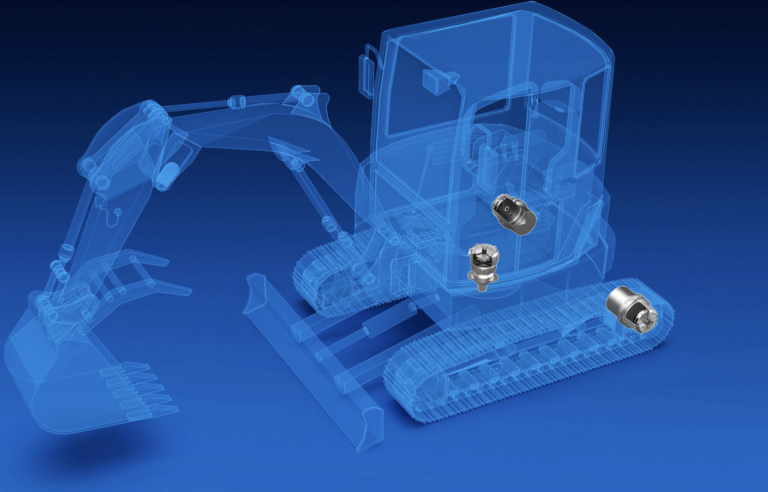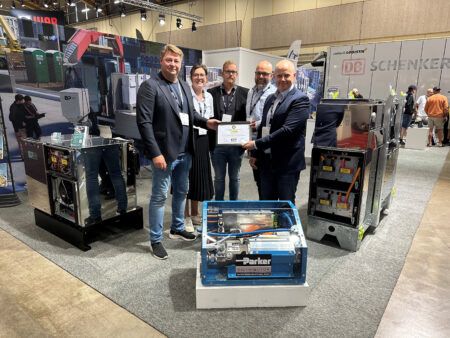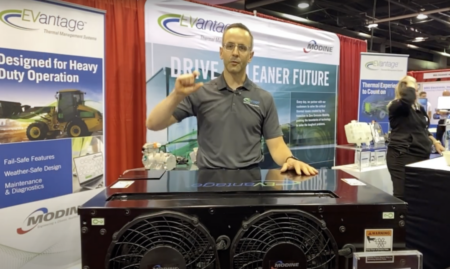The off-highway industry is currently moving through a significant transition. The journey started 10-12 years ago as the forklift truck industry began converting from internal combustion engines into electric drives. Today, construction equipment, more precisely, compact construction equipment, has also begun the transformative conversion to electric drives.
The move to electric
As with the automotive industry, national and municipal emission regulations are rapidly becoming more restrictive for off-highway vehicles and equipment. In some areas, the use of gas-powered equipment has already been completely banned. Some analysts believe that by 2030, 50% of the construction equipment market will be electric powered.
As environmental awareness grows, construction equipment manufacturers have begun to respond with electric powered equipment that meets various mandated emission regulations. However, they are also being driven by voluntary environmental policies adopted by construction contractors and large equipment rental companies.
This new generation of much quieter equipment is not only environmentally friendly, but also provides increased operator comfort, health and safety benefits.
Reducing power consumption
Warner Electric offers innovative braking solutions designed to reduce power consumption on a wide variety of battery-powered construction equipment, including slewing and track drives on excavators, wheel and track motors on compact track loaders, skid steers, wheeled excavators and mobile elevating work platforms (MEWPs).
Highly experienced Warner Electric application engineers routinely work with Tier 1 drivetrain OEMs as well as major construction equipment manufacturer engineering teams to develop compact, energy efficient braking solutions to meet the needs of each vehicle requirement, whether it’s for a completely new design or the electric conversion of existing equipment.
Its design process typically starts with one of its existing industry-proven braking solutions, including the popular PK and CBTB ranges. Once selected, customization of the unit begins, including IP rating, manual release cables, connectors, sensors and friction material. The result is a plug and play product that the OEM can easily integrate into his drivetrain.
Proven design
Warner Electric’s market-leading PK (Very Thin) brake is the industry’s original compact, proven brake design. These pre-assembled on/off dry safety brakes are used for parking and offer emergency stop capabilities. The vehicle’s AC motor is used in combination with the PK brake for regenerative braking of the vehicle.
The benefits of this cost competitive range include one-piece design for easy assembly, lower power consumption, longer battery life, and overall lower maintenance costs. These brakes are enclosed to withstand harsh outdoor environments. IP67-Rated models are available to meet challenging washdown application requirements.
The recently launched PK- Low Noise Design brake features a unique patent-pending dampening system that significantly reduces operating (engagement) noise to below 70db. The new brake was developed for applications where high noise levels can be annoying such as under-cab slewing drives on mini excavators.
High-torque, high-speed brakes
The CBTB family of electomagnetic axle brakes are specifically for use on battery-powered, dual-drive vehicles with capacities generally up to 8 tons (17,900 lbs.). These advanced high-speed, high-torque brakes provide reliable emergency and parking brake functionality and allow for increased maximum vehicle speed and improved productivity.
Proprietary W134 non-stick dry friction material, designed and manufactured in-house, is available on PK and CBTB models for increased high-capacity braking requirements at very high speeds. The linear speed of the friction material determines the speed limit, certain brakes and design sizes have been functionally tested at speeds of 12,000 rpm.
With multiple manufacturing facilities strategically positioned around the world, Warner can provide short lead times while meeting the demanding delivery requirements of global OEM production schedules.





